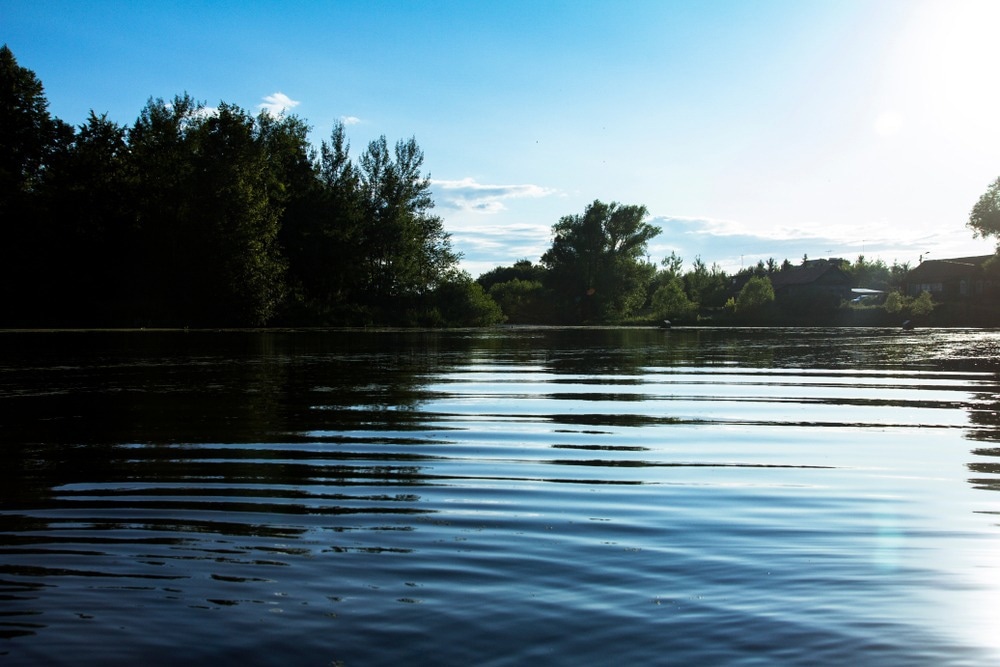A paper published in the journal Materials Today reported the synthesis of graphene oxide using the modified Hammer’s method. The synthesized graphene oxide was then used to make a filter bed to purify river water via gravity filtration.

Study: Synthesis of graphene oxide and its application for purification of river water. Image Credit: Tim7914/Shutterstock.com
The Importance of Water
Water is the most essential and necessary resource on the planet; without it, there is no life. Although seawater covers more than two-thirds of the Earth's surface, only a small fraction is utilized for drinking and other industrial functions.
Water on the surface of Earth, including river water, underground, and lake water, is the primary source of drinking water. However, these resources are quickly depleting due to the rapid increase in urbanization, population growth, and pollution.
Water contamination is caused mostly by improper waste disposal, inadequate sewage systems, and a lack of water management mechanisms.
The Role of River Water
Alternative water resources like river water have recently emerged because of the rising shortage of freshwater resources worldwide.
Pollutants, as well as the high expenses of pollution treatment and removal of salts and unwanted particles, restrict the use of river water.
Therefore, the deployment of cost-effective water filtration technologies is imperative for the desalination of river water and purification of polluted water.
Gravity Filtration
Filtration using a gravity filter is a highly popular method for water purification. A gravity filter is a type of pressure filter wherein water passes through the filtering component on the influent side at atmospheric pressure.
A major benefit of gravity filters is that they are free from moving components, therefore needing less filter maintenance. As the name suggests, the whole gravity filter system is driven by the force of gravity instead of electricity.
A significant advantage of using a gravity-based water filtration system is that the system does not need a power supply. Furthermore, gravity filters come in various sizes and dimensions, which is quite advantageous.
The main drawback, on the other hand, is the low output of purified water. The limitations of filtering technology dictate that no one filtration material can remove all pollutants present in water.
Benefits of Using Graphene Oxide
The outstanding physical and chemical characteristics of graphene oxide allow it to act as an effective filtration medium during the desalination process of river water. Graphene oxide also acts as an antibacterial filter medium during water purification.
With extensive research on graphene and graphene oxide, there is now a clear understanding of the unique features of graphene and graphene oxide, such as their superior tensile strength and impermeability against tiny particles.
Graphene oxide can be used to create an incredibly thin film with adjustable pores, enabling a high flux of purified water.
Two-dimensional sheets of graphene oxide are incredibly light and can withstand significant water pressures. Thanks to the hydrophilic nature of graphene, its large surface area, and its highly porous structure, water can spread uniformly throughout the graphene oxide sheets, thus improving the quality of adsorption.
Another benefit of graphene oxide is that it is biocompatible and may be synthesized utilizing a simple process known as Hammer's method.
Important Findings of the Study
In this work, the team created a gravity filter using graphene oxide. The synthesized graphene oxide sheets were very smooth and tightly connected. These graphene oxide sheets were successfully used to create the gravity filter to purify river water.
Water quality tests revealed that in terms of efficiency, filters based on graphene oxide outperformed those that did not contain graphene oxide.
The level of dissolved oxygen (O2) in the filtered water was higher than in unpurified river water, indicating that microorganisms were removed during filtering.
The use of graphene oxide filters gave a higher efficiency in eliminating arsenic and fluoride from water as compared to filters without graphene oxide. The pH of the filtered water was 6.88, while the unfiltered river water had a pH of 8.47.
The physical appearance of the filtered water also supported these findings.
Reference
Gayen, S., Bej, B., Boxi, S. S., & Ghosh, R. (2022). Synthesis of graphene oxide and its application for purification of river water. Materials Today: Proceedings. Available at: https://www.sciencedirect.com/science/article/pii/S221478532205297X?via%3Dihub
Disclaimer: The views expressed here are those of the author expressed in their private capacity and do not necessarily represent the views of AZoM.com Limited T/A AZoNetwork the owner and operator of this website. This disclaimer forms part of the Terms and conditions of use of this website.